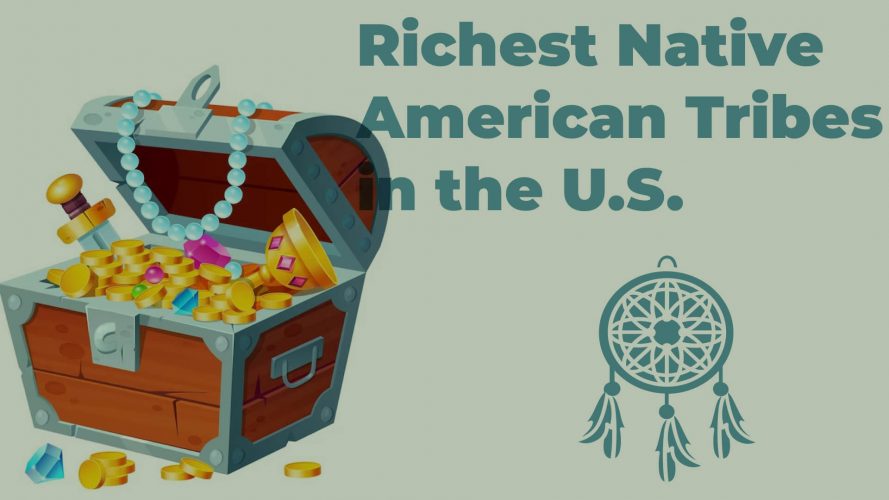
Native American tribes have a rich and diverse cultural history. Over the years, some tribes have been able to leverage resources, businesses, and partnerships to build substantial wealth. This article explores the wealthiest Native American tribes, delving into the sources of their income, their contributions to the community, and how they manage and utilize their funds.
The Shakopee Mdewakanton Sioux Community (SMSC)
The SMSC’s history is deeply rooted in the Dakota tradition. Originally residing in the Minnesota River Valley, they were primarily hunters and gatherers. The U.S.-Dakota War of 1862 had a significant impact on their community. Over time, they regained strength, focusing on self-sufficiency and economic development.
Income Sources and Businesses
- Gaming: Operates Mystic Lake Casino Hotel and Little Six Casino.
- Real Estate: Investments in local commercial properties.
- Community Partnerships: Collaborations with local businesses for sustainable growth.
Community Contributions
- Education: Supports schools and scholarships.
- Healthcare: Funds healthcare facilities.
- Environment: Invests in sustainable practices.
The Seminole Tribe of Florida
The Seminole Tribe originated from the Creek Nation in the early 18th century. Known for their resistance against U.S. forces, they never formally surrendered or signed a peace treaty with the U.S. government. They were recognized as a sovereign nation in 1957 and have since become an economic powerhouse.
Income Sources and Businesses
- Hospitality: Owns the Hard Rock Hotel & Casino chain.
- Agriculture: Investments in cattle ranching and citrus farming.
- Tourism: Runs cultural museums and eco-tours.
Community Contributions
- Economic Development: Funds community infrastructure.
- Healthcare: Operates healthcare facilities.
- Education: Provides educational grants and programs.
The Pequot Tribe
The Pequot Tribe is one of the oldest recorded Native American tribes in North America. They were a dominant force in southern New England during the 17th century. The Pequot War in 1637 significantly impacted the tribe, but they have since recovered, retaining their cultural heritage and focusing on economic growth.
Income Sources and Businesses
- Gaming: Runs Foxwoods Resort Casino, one of the largest in the world.
- Real Estate: Investments in residential and commercial properties.
- Retail: Manages shopping centers and outlets.
Community Contributions
- Education: Supports educational initiatives and scholarships.
- Healthcare: Provides comprehensive healthcare services.
- Social Services: Offers a range of support services for community members.
The Choctaw Nation
The Choctaw people were originally part of the large Mound Builder cultures in the Mississippi River Valley. They were forcibly relocated during the infamous Trail of Tears in the 1830s. Despite this, they rebuilt their community and have become the third-largest Native American tribe in the U.S.
Income Sources and Businesses
- Gaming: Operates several casinos.
- Manufacturing: Owns various manufacturing facilities.
- Agriculture: Investments in farming and ranching.
Community Contributions
- Economic Growth: Invests in community businesses.
- Education: Funds schools and educational programs.
- Health: Operates hospitals and healthcare facilities.
The Osage Nation
The Osage Nation originally inhabited the Ohio Valley and later migrated to what is now Missouri, Arkansas, and Oklahoma. They played a crucial role in the fur trade in the 18th century. In the early 20th century, the discovery of oil on their lands led to significant wealth, which has been both a blessing and a challenge.
Income Sources and Businesses
- Oil and Gas: Profits from substantial oil reserves.
- Real Estate: Investments in commercial and residential properties.
- Tourism: Manages cultural tourism and heritage sites.
Community Contributions
- Cultural Preservation: Funds cultural centers and museums.
- Education: Supports educational initiatives, including scholarships.
- Social Welfare: Provides social services and community support programs.
Economic Strategies and Innovations
Diverse Investments
Many of the wealthiest Native American tribes have pursued diversified investment strategies. They’ve entered various sectors like gaming, real estate, manufacturing, and tourism, demonstrating a keen business acumen and forward-thinking approach.
Partnerships and Collaborations
Forming partnerships with local governments, private businesses, and other tribes has played a crucial role in their economic success. Collaborations often lead to mutual benefits, such as shared profits, increased employment opportunities, and community development.
Social and Cultural Impact
Preservation of Heritage
These tribes actively invest in preserving their unique cultural heritage through museums, cultural centers, and educational programs. They seek to pass down traditions, language, and values to future generations.
Community Development
Wealth has allowed these tribes to invest heavily in their communities. They fund education, healthcare, social welfare, and more, striving to uplift and support their members. This focus on community well-being demonstrates a commitment to social responsibility and human development.
Challenges and Controversies
Legal and Regulatory Challenges
While these tribes have achieved significant economic success, they have also faced legal and regulatory challenges. From disputes over land rights to regulatory compliance in the gaming industry, navigating the legal landscape has been complex and often contentious.
Ethical Considerations
Some tribes have faced criticism and ethical questions related to certain business practices, such as the impact of gaming on vulnerable populations. These challenges highlight the delicate balance between economic growth and social responsibility.
Future Prospects and Opportunities
Sustainability Initiatives
Many tribes are exploring sustainable practices to ensure long-term prosperity. Investing in renewable energy, implementing environmentally-friendly business practices, and focusing on sustainable development align with traditional values and modern global goals.
Emerging Markets and Technologies
Looking to the future, these tribes are exploring emerging markets and technologies. From digital innovation in the gaming industry to investments in new sectors like technology and healthcare, they continue to adapt and grow in a rapidly changing global economy.
Conclusion
These richest Native American tribes are examples of entrepreneurial success and cultural preservation. Through diversified investments and community-driven focus, they’ve created economic prosperity that benefits not only their members but also the broader community. Their stories reflect the strength, resilience, and innovative spirit inherent in Native American heritage.